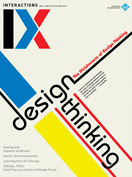Authors:
Leslie García, Andrés Dómene, Thiago Hersan, Rodrigo Frenk, Marcela Armas, Arcángelo Constantini, Gilberto Esparza, Leo Nuñez
In 2017, for the first time in SIGGRAPH's history, the Art Gallery was dedicated exclusively to works by Latin American artists and designers: speculative artifacts that apply digital technologies to critically engage our present and map alternative futures [1].
The exhibition can be understood as an invitation to take two parallel journeys. One relates to technological artifacts as agents that frame the ways we act in the world and think about the world. The second journey explores technology-based artistic practices produced beyond the traditional centers of industrial and technological development in order to illuminate new social narratives and new images of the possible.
Uncertain. Agitated. Disobedient. Unstable. Troubled. The "unsettled artifacts" of the 2017 SIGGRAPH Art Gallery emphasized the power of the poetics of technological speculation and shared new insights on how Latin American artists create, adapt, and use technology to critically confront a rich and diverse cultural context shaped by long histories of imperialism, colonization, and global asymmetry.
Paula Gaetano Adi, SIGGRAPH 2017 Art Gallery Chair
http://s2017.siggraph.org/content/art-gallery
 1. Imaginario Inverso (Reverse Imaginary)
1. Imaginario Inverso (Reverse Imaginary)
Astrovandalistas is a collective that applies creative intervention, technological activism, urban hacking, and open source knowledge to explore the geopolitics of technology development and the commercialization of scientific knowledge. Imaginario Inverso repurposes a modem laser technology to engrave predictions and micro-narratives onto rocks and city debris. These are redistributed back to the land to create other kinds of local networks to communicate with the future.
Using a glyphic alphabet designed by Astrovandalistas, this future-casting platform is a creative opportunity for manifesting anxieties about the future and the appropriation of technologies for more personal use.
Unsettled artifacts: Technological speculations from Latin America. Leonardo 50, 4 (Aug. 2017), 410–437; https://www.mitpressjournals.org/doi/abs/10.1162/LEON_a_01459
https://astrovandalistas.cc/futureglyphs/
Astrovandalistas (Leslie García, Andrés Padilla Dómene, Thiago Hersan, and Rodrigo Frenk)
 |
Astrovandalistas use lasers to engrave rocks with messages to the future in their own glyphic alphabet. |
 2. Milpa Polímera (Polymer Cornfield)
2. Milpa Polímera (Polymer Cornfield)
Inspired by the conflicting relationship between the market-driven economy of maize and its deep symbolic and cultural value in Mexico, Milpa Polímera is a 3D printer modified to function as a tractor that plants infertile seeds made of polylactic acid, a thermoplastic biopolymer produced from a patented strain of corn. The machine is trapped in an absurd and perverse cycle that contradicts the very origins of corn: a plant domesticated about 10,000 years ago by a collective civilization whose cosmogony and culture saw it as a shared source of life.
Unsettled artifacts: Technological speculations from Latin America. Leonardo 50, 4 (Aug. 2017), 410–437; https://www.mitpressjournals.org/doi/abs/10.1162/LEON_a_01459
https://www.youtube.com/watch?v=8me8uO1UcxA
Marcela Armas and Arcángelo Constantini
 |
A tractor robot travels along a fixed circular path, sowing its artificial seeds. |
BioSoNot 1.2 is a hybrid bio-sound instrument that translates biological activity into sound as it cleans contaminated water samples. It generates music and noise from the biological activity of living microorganisms inhabiting the L.A. River. A series of custom-made microbial fuel cells (biosensors) captures and harvests electrons produced by the metabolic processes of bacteria; these are then fired as energy into an oscillator that expresses the information as sound, generating an organic symphony of bacterial life.
Unsettled artifacts: Technological speculations from Latin America. Leonardo 50, 4 (Aug. 2017), 410–437; https://www.mitpressjournals.org/doi/abs/10.1162/LEON_a_01459
https://www.youtube.com/watch?v=Dvh-yw1ENno
http://www.interactivearchitecture.org/towards-a-new-symbiosis-gilberto-esparza.html
https://www.youtube.com/watch?v=oWAwWTaVfGE
https://www.youtube.com/watch?v=tVPU34ngM_k
Gilberto Esparza
 |
Listening to the microbial music of BioSoNot 1.2. |
Dispersiones is a physical network comprising a series of interconnected relays that produce an artificial interactive soundscape. The work appears to be a messy web of hundreds of tangled wires through which sounds travel, following an algorithm of artificial life. Using only the metallic clicking sound of the relays, the network behaves as a complex system of electromagnetic actuators that interact with the viewer. Each individual relay acts as a "living" agent that activates the space and the architecture. Once the system detects a viewer's movement, it unleashes an infinite flow of sound and light.
Unsettled artifacts: Technological speculations from Latin America. Leonardo 50, 4 (Aug. 2017), 410–437; https://www.mitpressjournals.org/doi/abs/10.1162/LEON_a_01459
http://www.leonunez.com.ar/ejndex.html
https://www.youtube.com/watch?v=KDWlnvisClw
https://www.youtube.com/watch?v=PJug065uD2g
Leo Nuñez
 |
A network of clicking relays comes to life through sound and light. |
1. The gallery presented 10 provocative projects from seven countries: Marcela Armas and Arcángelo Constantini (Mexico), Paul Rosero Contreras (Ecuador), Gilberto Esparza (Mexico), Hamilton Mestizo (Colombia), Gisela Motta and Leandro Lima (Brazil), Rodolfo Peraza (Cuba), Christian Oyarzún (Chile), Leo Nuñez (Argentina), Astrovandalistas (Mexico, Brazil), Mariela Yeregui and Miguel Grassi (Argentina).
©2018 ACM 1072-5520/18/05 $15.00
Permission to make digital or hard copies of all or part of this work for personal or classroom use is granted without fee provided that copies are not made or distributed for profit or commercial advantage and that copies bear this notice and the full citation on the first page. To copy otherwise, to republish, to post on servers or to redistribute to lists, requires prior specific permission and/or a fee.
The Digital Library is published by the Association for Computing Machinery. Copyright © 2018 ACM, Inc.






Post Comment
No Comments Found